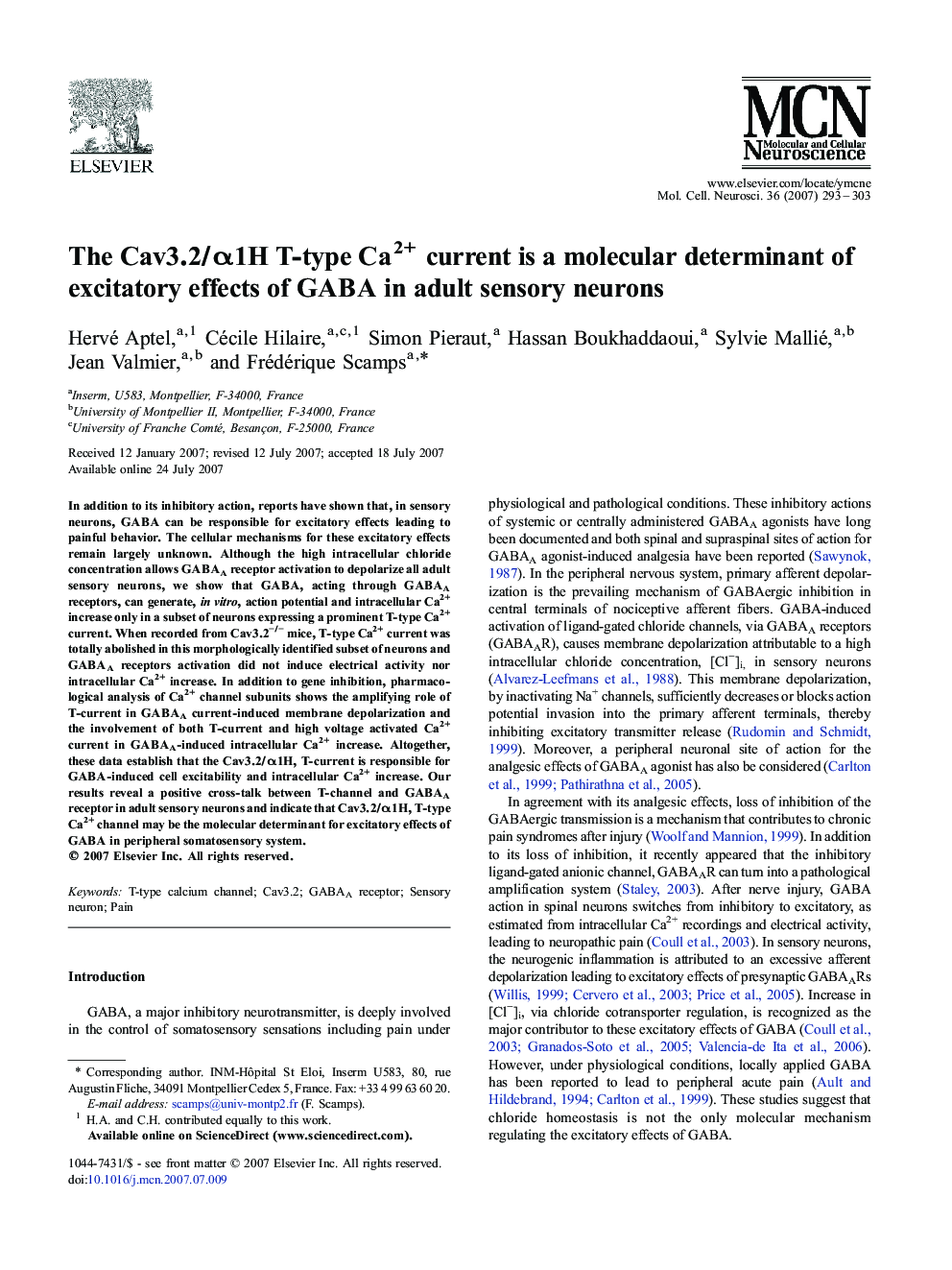| Article ID | Journal | Published Year | Pages | File Type |
|---|---|---|---|---|
| 2199214 | Molecular and Cellular Neuroscience | 2007 | 11 Pages |
In addition to its inhibitory action, reports have shown that, in sensory neurons, GABA can be responsible for excitatory effects leading to painful behavior. The cellular mechanisms for these excitatory effects remain largely unknown. Although the high intracellular chloride concentration allows GABAA receptor activation to depolarize all adult sensory neurons, we show that GABA, acting through GABAA receptors, can generate, in vitro, action potential and intracellular Ca2+ increase only in a subset of neurons expressing a prominent T-type Ca2+ current. When recorded from Cav3.2−/− mice, T-type Ca2+ current was totally abolished in this morphologically identified subset of neurons and GABAA receptors activation did not induce electrical activity nor intracellular Ca2+ increase. In addition to gene inhibition, pharmacological analysis of Ca2+ channel subunits shows the amplifying role of T-current in GABAA current-induced membrane depolarization and the involvement of both T-current and high voltage activated Ca2+ current in GABAA-induced intracellular Ca2+ increase. Altogether, these data establish that the Cav3.2/α1H, T-current is responsible for GABA-induced cell excitability and intracellular Ca2+ increase. Our results reveal a positive cross-talk between T-channel and GABAA receptor in adult sensory neurons and indicate that Cav3.2/α1H, T-type Ca2+ channel may be the molecular determinant for excitatory effects of GABA in peripheral somatosensory system.
